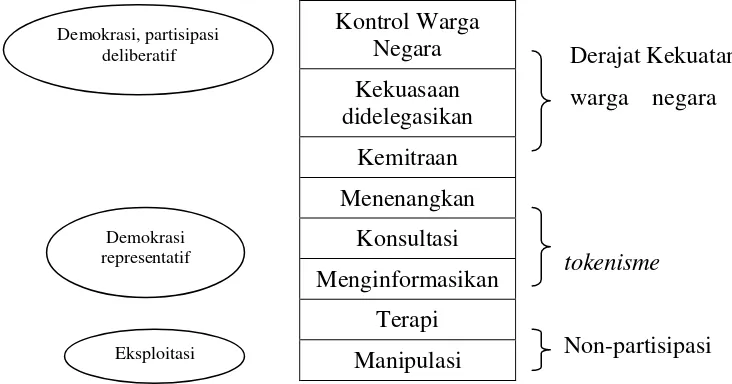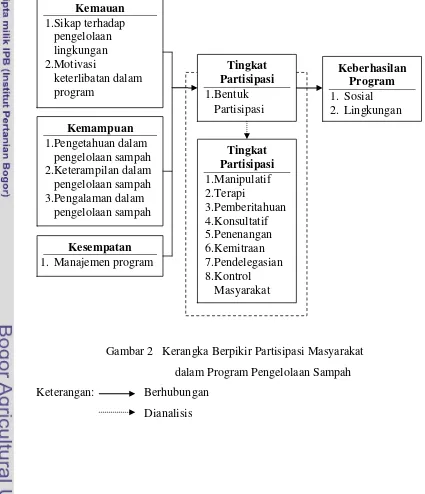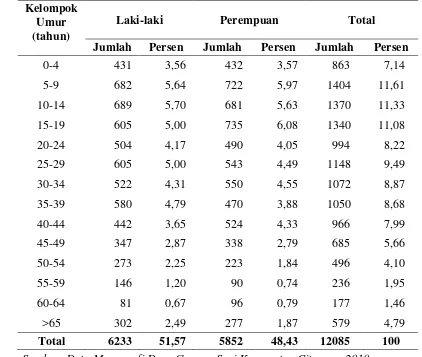Informasi Dokumen
- Penulis:
- Dinda Ayu Lokita
- Pengajar:
- Dr. Ir. Ninuk Purnaningsih, M.Si
- Sekolah: Institut Pertanian Bogor
- Mata Pelajaran: Sains Komunikasi dan Pengembangan Masyarakat
- Topik: Partisipasi Masyarakat Dalam Program Pengelolaan Sampah (Kasus Implementasi Corporate Social Responsibility PT Indocement Tunggal Prakarsa Tbk. di Desa Gunung Sari, Kecamatan Citeureup, Kabupaten Bogor)
- Tipe: skripsi
- Tahun: 2011
- Kota: Bogor
Ringkasan Dokumen
I. Introduction
This section sets the foundation for understanding the significance of community participation in waste management programs, particularly in the context of Corporate Social Responsibility (CSR) by PT Indocement Tunggal Prakarsa Tbk. The introduction outlines the need for community engagement in sustainable development initiatives, emphasizing that empowerment and participation are crucial for the success of such programs. It highlights the gap between top-down approaches and the necessity for genuine involvement from local stakeholders, establishing the research's relevance to educational objectives in community development and environmental management.
II. Theoretical Approach
This section reviews relevant literature on community participation, identifying key definitions, factors influencing participation, and levels of engagement. It discusses the importance of understanding participation as a multi-faceted concept that includes decision-making, implementation, evaluation, and benefit-sharing. Theoretical frameworks, such as Arnstein's ladder of participation, are presented to illustrate varying degrees of community involvement. This theoretical grounding is essential for students and researchers in understanding how participatory approaches can enhance program effectiveness and community empowerment.
2.1. Definition of Participation
This subsection defines participation as the active involvement of community members in decision-making processes, program implementation, and evaluation. It emphasizes the importance of empowering communities to influence their development outcomes, which is critical for students studying community engagement strategies.
2.2. Factors Affecting Participation
This subsection outlines the three main factors that influence community participation: willingness, ability, and opportunity. Understanding these factors is crucial for designing effective community programs and is a key learning outcome for students in social sciences and community development.
2.3. Levels of Participation
This subsection discusses Arnstein's ladder of participation, categorizing levels from manipulation to citizen control. It serves as a valuable tool for students to assess and evaluate the effectiveness of participatory practices in various contexts.
III. Field Approach
This section describes the methodology used in the research, including the location, data collection techniques, and analysis methods. It highlights the use of surveys to assess community participation levels and the significance of employing quantitative methods in social research. This practical approach is relevant for students learning about research design and data analysis in social sciences.
3.1. Research Location and Time
This subsection provides details about the specific location of the study, Gunung Sari Village, and the timeframe of the research. Understanding the context of research is vital for students to grasp the importance of local dynamics in community studies.
3.2. Data Collection Techniques
This subsection elaborates on the survey method used to gather data from the community. It emphasizes the importance of using appropriate data collection methods in research, a key skill for students in academic research.
IV. Overview of PT Indocement Tunggal Prakarsa Tbk
This section provides background information on PT Indocement, its mission, and the CSR initiatives it undertakes, particularly the waste management program. This overview contextualizes the company's role in community development, making it relevant for students studying corporate responsibility and environmental management.
4.1. Company Background
This subsection presents the vision, mission, and CSR department of PT Indocement. It is crucial for students to understand the corporate context in which community programs operate.
4.2. Waste Management Program Description
This subsection outlines the objectives and activities of the waste management program, providing practical examples of CSR in action. This is important for students to see how theory translates into practice.
V. Respondent Characteristics
This section analyzes the demographic characteristics of the survey respondents, including age, education level, occupation, and income. Understanding the respondent profile is essential for interpreting research results and is a key learning outcome for students in social research methods.
5.1. Age Distribution
This subsection presents data on the age of respondents, highlighting the demographic diversity within the community. This information is vital for understanding the perspectives of different age groups in community participation.
5.2. Education Level
This subsection discusses the educational background of respondents, providing insights into how education may influence participation levels. This is a critical factor for students to consider in community engagement strategies.
VI. Factors Encouraging Participation
This section identifies and discusses the factors that promote community participation in the waste management program, including motivation, willingness, and opportunity. Analyzing these factors is crucial for developing strategies to enhance community engagement, making this section relevant for students in community development.
6.1. Willingness
This subsection examines the attitudes and motivations of respondents towards environmental issues and the waste management program. Understanding these motivations is essential for designing effective community programs.
6.2. Ability
This subsection discusses the knowledge and skills of respondents related to waste management. It highlights the importance of capacity building in enhancing community participation, a key concept for students in social development.
VII. Relationship Between Participation Factors and Participation Level
This section explores the correlation between various factors and the level of community participation in the waste management program. Understanding these relationships is vital for evaluating program effectiveness and is a key learning outcome for students in social research.
7.1. Willingness and Participation Level
This subsection analyzes how the willingness of respondents affects their participation levels. It emphasizes the importance of fostering a positive attitude towards community programs.
7.2. Ability and Participation Level
This subsection discusses the impact of respondents' knowledge and skills on their participation. It highlights the necessity of training and education in enhancing community involvement.
VIII. Community Participation Level in Waste Management Program
This section assesses the overall level of community participation in the waste management program, categorizing it according to Arnstein's ladder of participation. This analysis is crucial for understanding the effectiveness of community engagement strategies and is relevant for students studying participatory development.
8.1. Participation in Planning
This subsection evaluates the extent to which community members are involved in the planning phase of the waste management program. It stresses the importance of early engagement for successful outcomes.
8.2. Participation in Implementation
This subsection discusses the role of community members in the implementation of the program, highlighting the need for active involvement to ensure program sustainability.
IX. Relationship Between Participation Level and Program Success
This section examines the link between the level of community participation and the success of the waste management program. Understanding this relationship is critical for assessing the impact of participatory approaches and is a key learning outcome for students in program evaluation.
9.1. Program Success Indicators
This subsection outlines the indicators used to measure the success of the waste management program, providing a framework for students to evaluate program effectiveness.
9.2. Correlation Analysis
This subsection presents the findings of the correlation analysis between participation levels and program success, emphasizing the importance of community involvement in achieving positive outcomes.
X. Conclusion
This section summarizes the key findings of the research, reiterating the importance of community participation in waste management programs. It emphasizes the need for companies to engage with communities genuinely to enhance program effectiveness. This conclusion serves as a critical reflection point for students studying the impact of CSR and community engagement strategies.
10.1. Recommendations
This subsection offers practical recommendations for improving community participation in CSR initiatives, providing actionable insights for students and practitioners in the field.
Referensi Dokumen
- CSR Dalam Praktik Di Indonesia, Wujud Kepedulian Dunia Usaha ( Ambadar J. )
- Partisipasi Peserta dalam Program Pengelolaan Sampah Organik di Komunitas Kumuh Perkotaan Bantaran Sungai Ciliwung ( Astuti YP. )
- Psikologi Sosial ( Baron RA, Byrne D. )
- Corporate Social Responsibility: Jawaban Bagi Model Pembangunan Indonesia Masa Kini ( Budimanta A, Prasetijo A, Rudito B. )
- Community Development: Alternatif Pengembangan Masyarakat di Era Globalisasi ( Ife J, Tesoriero F. )









